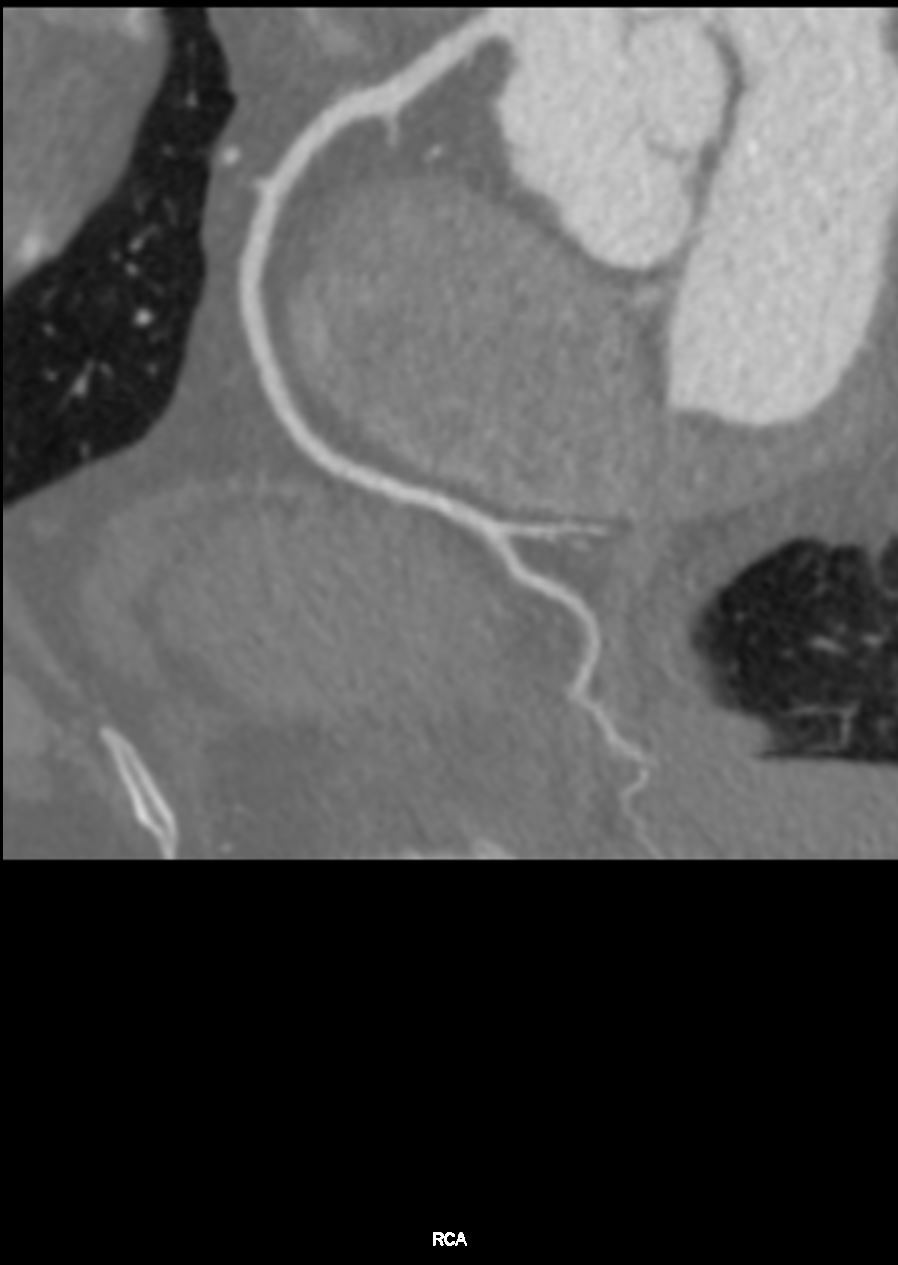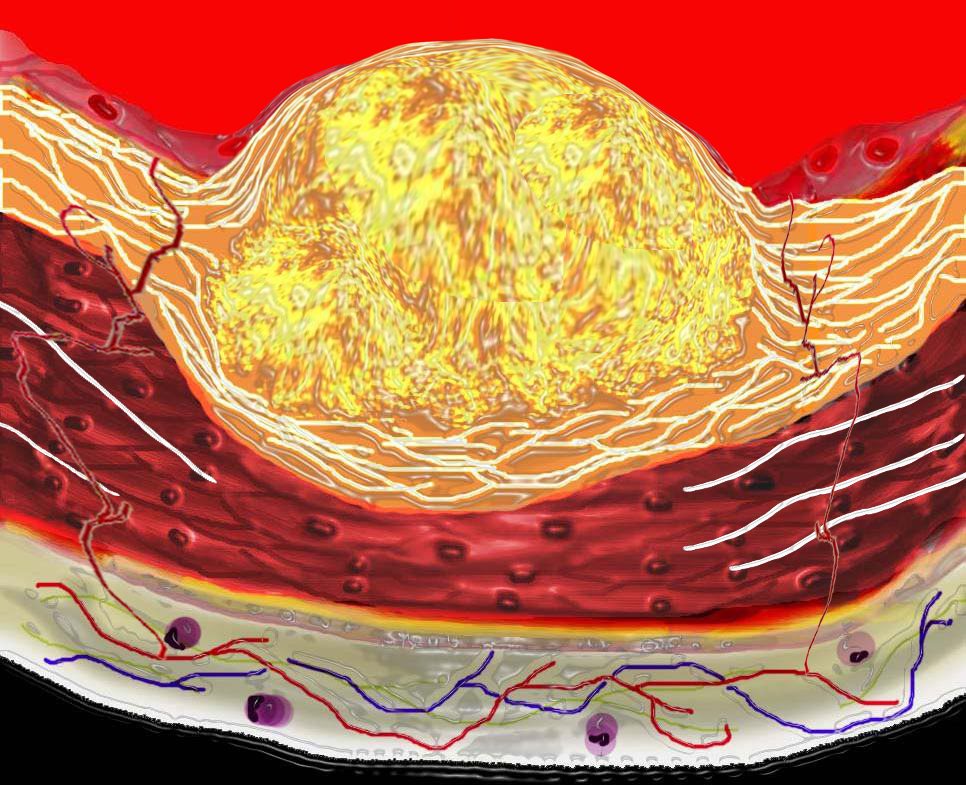Welcome the new 1st year residents
- Anatomy
- Pathology
- History of Atherosclerosis
- Atherosclerosis
- Congenital Anomalies
- Embryology
- CTA Lecture
- My Teachers Go back a long way
- Van Praagh
- Segmental Approach to Complex Congenital Heart Disease
- Ongoing pursuit to find the underlying principles that govern complexity ( The Common Vein)
-
Approach to structural evaluation in health and disease
- Parts and Connections
- Size
- Shape
- Position
- Character
- Time
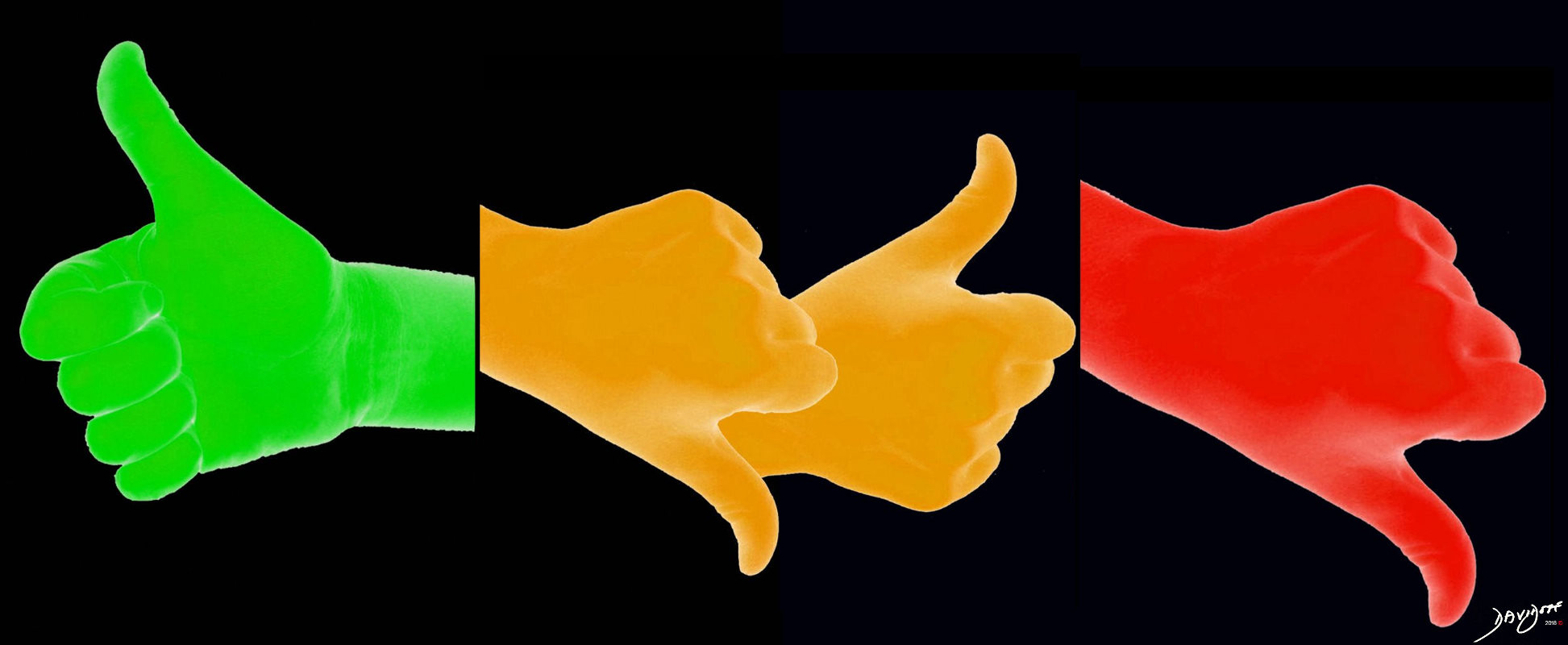
- Whichever technology is able to fulfill these elements wins the prize
- And I believe it is CT(at least for the diagnosis of CAD)
-
- It was advent of CT and its application that inspired me to
- hang up my triple headed Tycos
-
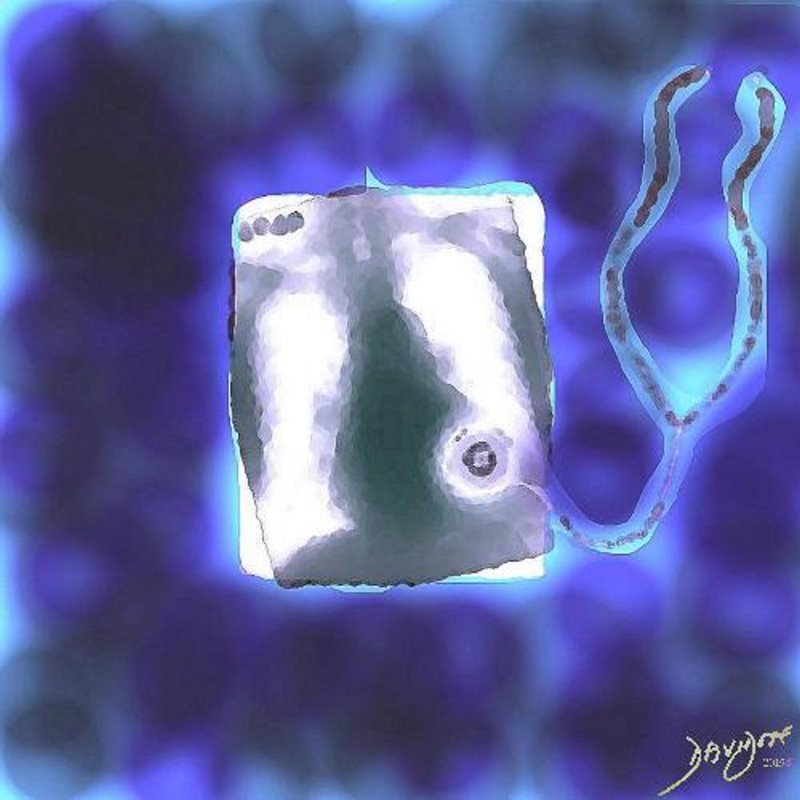
Listen with Your Eyes foe a Diagnosis in the Heart and the Lungs
Ashley Davidoff thecommonvein.net Davidoff art #CXR #stethoscope heart0012-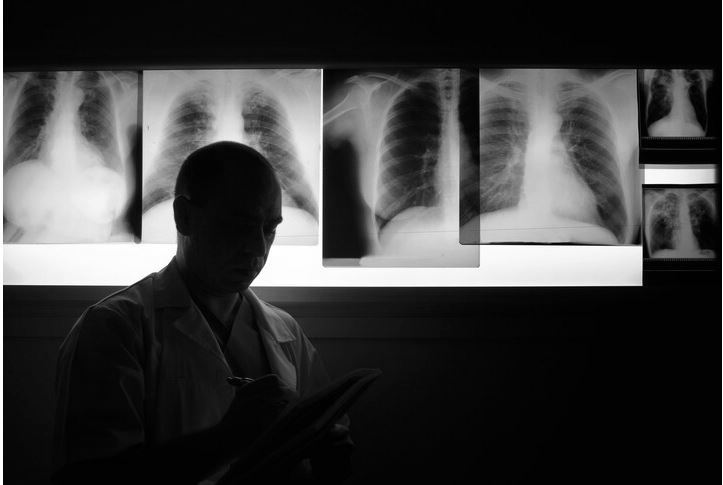
Radiologist in a Dark Room
Acknowledgement Philips Medical SystemsAt the time the perception of radiology was that
Working in a Dark Room
Subjectivity DominatedBut even in that world it gave birth to people like Dotter, Seldinger and Judkins
However it was my introduction to CT that sold Radiology to me
Nietsche – German philosopher
Believer in Perspectivism
Mother in Law Rosalie Fisher – Physicist
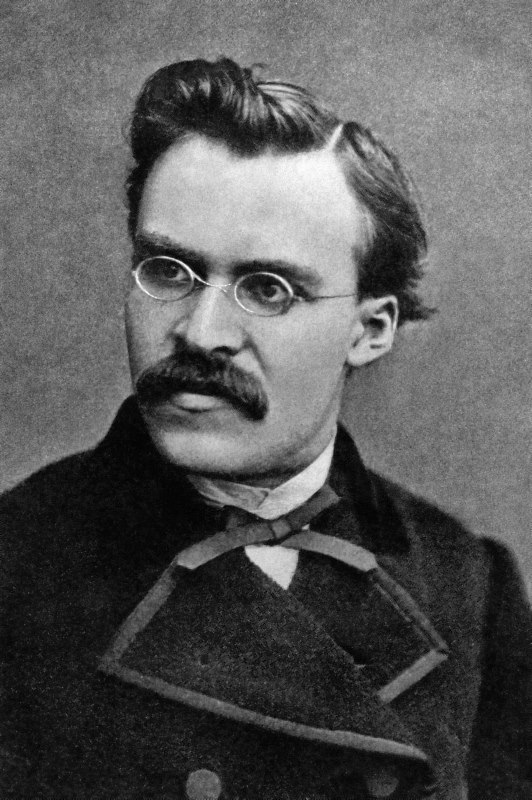
Nietzsche and the Truth Looking at the the Pixel/Voxel from Many Angles

Scanner – 256 rows of detectors
8 centimeters of coverage, with the entire heart covered in two scans The rotation speed is 0.27 seconds (total .54 seconds with 120 kw of power.
Now available 640 rows and in .27 secs we scan the whole heart in one rotation
Ashley Davidoff thecommonvein.netGave numbers to the pixels
(just like the the 0 and 1 of computer science)
Enabled Objectivity – Ability to Accurately Measure
The pixel has a number embedded within it

Once we have data in pixel form we can manipulate the data and this is the strength of digital acquisition
Ashley Davidoff MD
thecommonvein.net
This methodology is therefore able to provide objectivity, enabled by better measurement provided by better tools (computer algorithms)
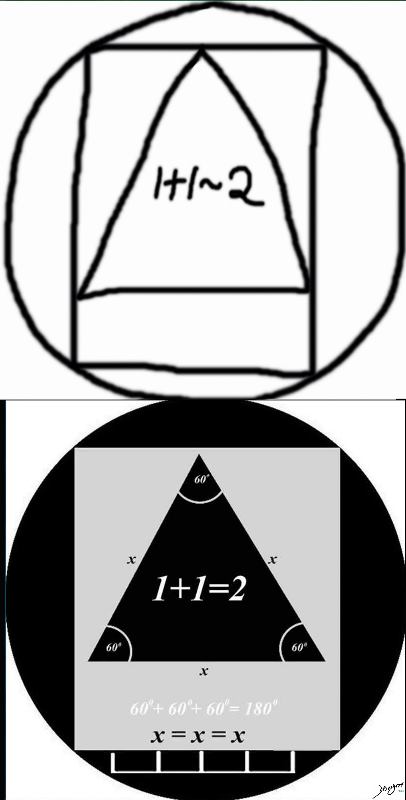
Ashley Davidoff MD
thecommonvein.net
- CT scan
- because of the nature of its acquisition
- it has the element of objectivity
Familiar to all is the Hounsfield Number relating to the density
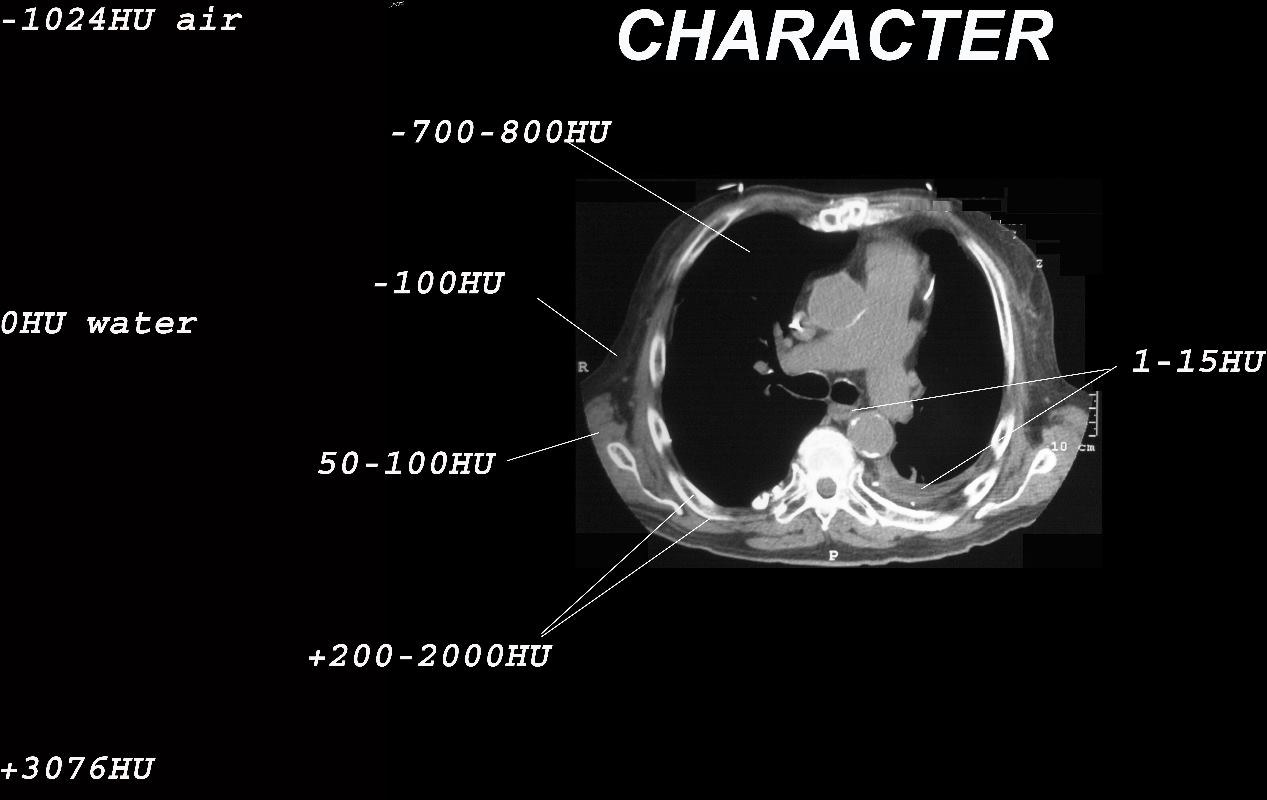
Ashley Davidoff MD thecommonvein.net
Blooming Artifact
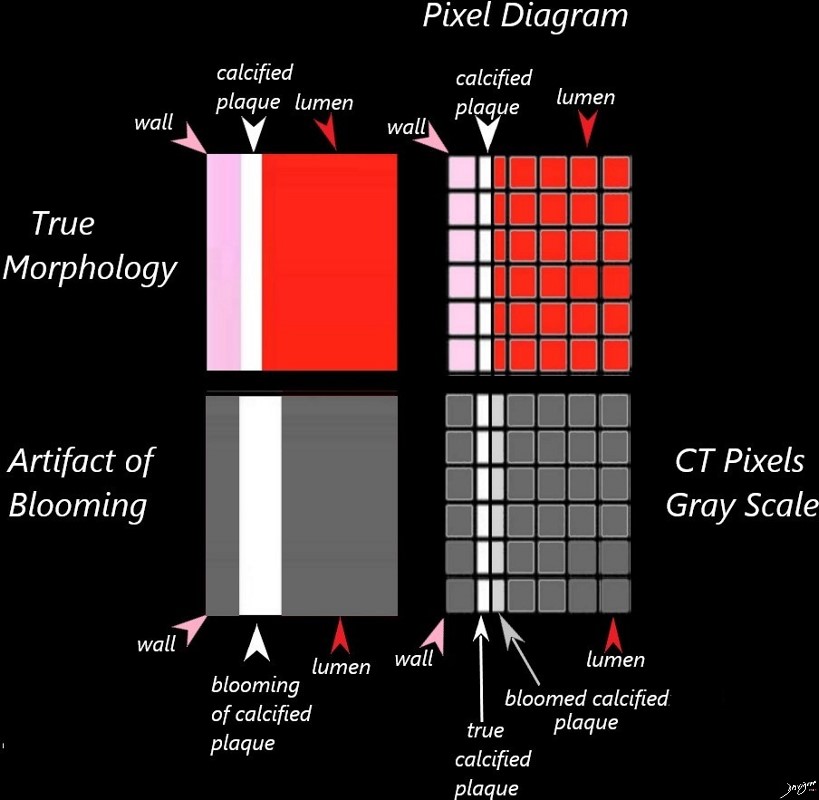
The small calcified plaque in the top left image is an artistic version of the reality ? calcified plaque that does not impinge on the lumen. The top right image is a CT in the ideal world recreated within the grid of pixels (voxels in 3D) The calcified plaque (white arrow) which shares a voxel space with the blood in the lumen) remains distinct and true to its size, demonstrating true lack of impingement on the lumen
The bottom row in gray scale shows what happens in a CT scan. The bottom left image shows what the CT would look like ie impingement by the plaque on the lumen. The bottom right explains the blooming artifact. The calcium of very high density (about 500HU) shares the voxel space with the blood which is soft tissue density (about 50 HU) and so the net density is about 450 HU. The voxel does not therefore reflect a true density and the lesion therefore appears to impinge on the lumen when, in actuality it does not. This is called the blooming artifact
Ashley Davidoff MD thecommonvein.net
Resolution At the Vessel Level
- Coronary Artery
- diameter 3-4mm
- wall thickness ranges from 0.55 to 1.0 mm
- intima and adventitia .2mm – .3mm
- … and the vessels is moving
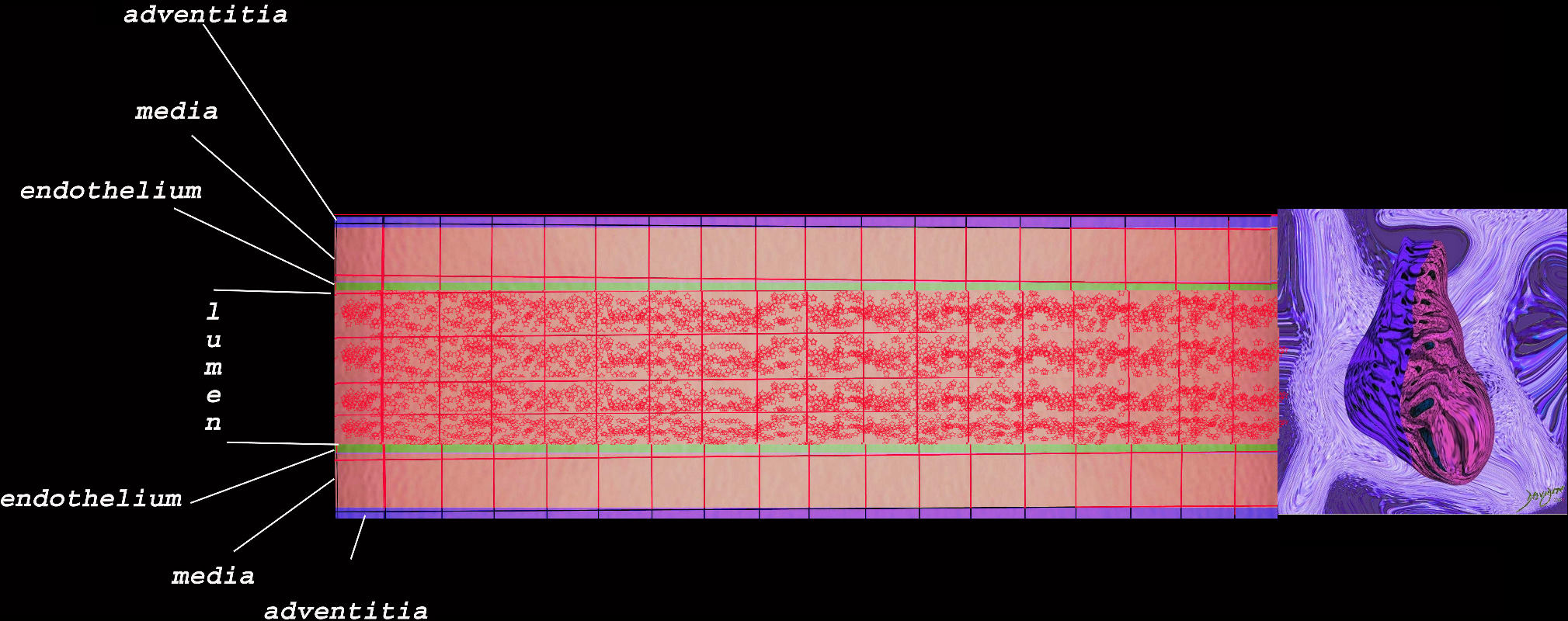
Ashley Davidoff MD thecommonvein.net
Subjectivity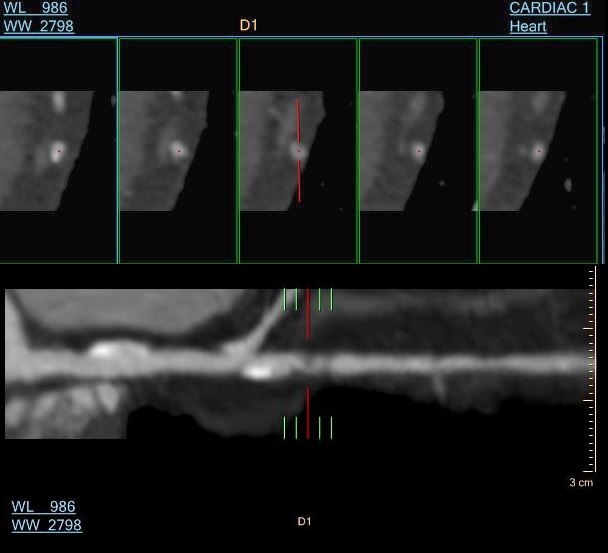
Consensus in the Trials
- ACCURACY, Core-64 multicenter Study, CONFIRM Study, PROMISE Study, SCOT Heart Study Summary
- revealed that we had a tool with high sensitivity and low specificity
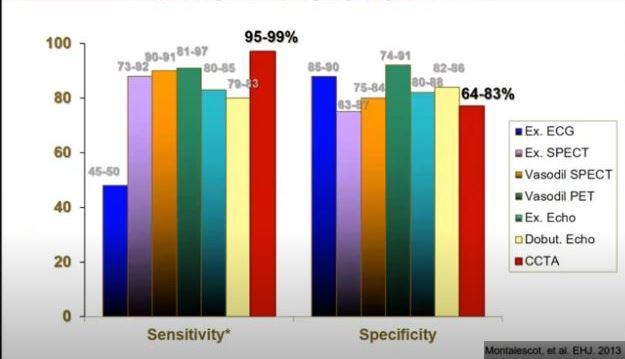
Montalescol et al
EHJ 2013
- SCOT Trial
-
- prevented future major adverse cardiovascular event (MACE),
-
- However over over the last 10 years or so we have developed new tools that are able to enhance and better use the information within the voxels which are
- readily applied because of the innate and sound basis of the digital acquisition of the information
- Advances include
-
- improved resolution
- reduced radiation
- faster times of acquisition
- computational algorithms that are able to
- infer function from structure (FFR CT )
- methodology to characterize the tissues in the arterial wall
-
using the digital information inside the voxels
The New Tools – “Game Changers”, “Paradigm Shift”
- Faster Acquisition –
- 256 to 320- 640 detectors
- 640-slice CT scanner can image the entire heart in less than one third of a second
- 256 to 320- 640 detectors
-
- 640 slice CT scanner uses 80% less radiation
- Computerized Algorithms and AI
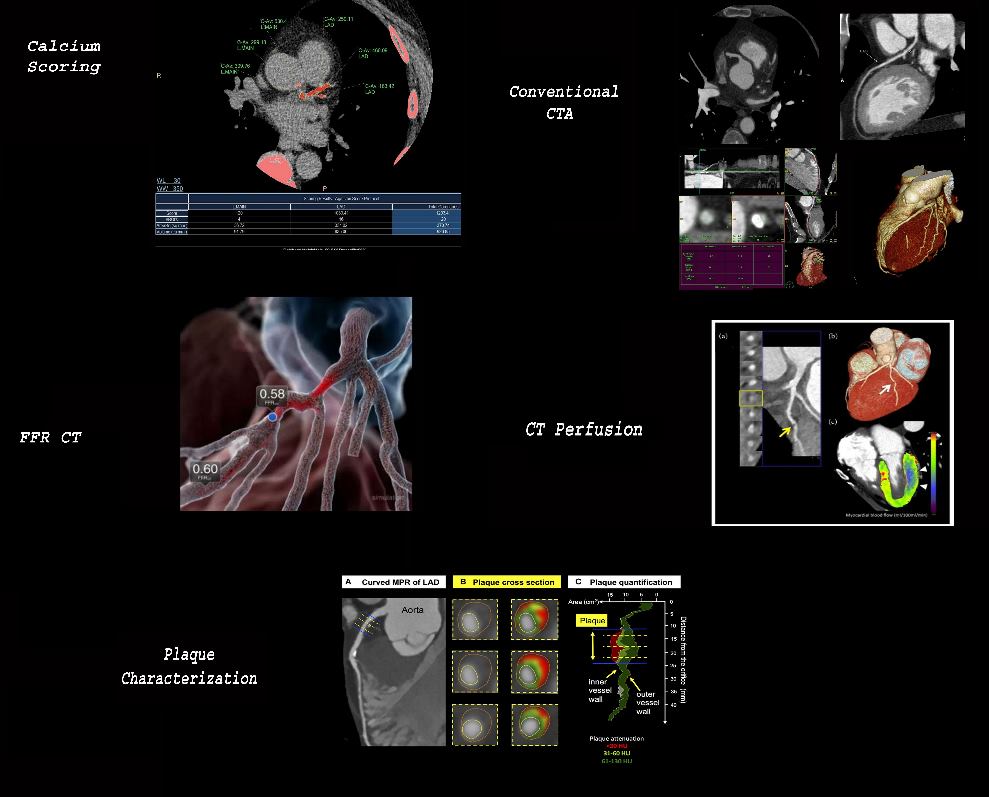
One Stop Shop – Calcium score, Coronary CTA, FFR CT, CT Perfusion, and Tissue Characterization
Calcium Score and Coronary CTA
- Acceptance and Recommendations by the Societies
- Class 1 recommendations
- 2016 Britain
- 2019 Europe
- ESC guideline
- 2021 US
- Class 1 recommendation
- patients with stable and acute chest pain
- (Narula J, et al 2021 Expert Consensus Document)
- Class 1 recommendation
Fractional ?ow reserve derived from CT – FFR CT
- measurement of
- pressure differences across a coronary artery stenosis (narrowing, usually due to atherosclerosis
- to determine the likelihood that the stenosis impedes oxygen delivery to the heart muscle
- maximum achievable blood flow in a diseased coronary artery and the
- theoretical maximum flow in a normal coronary artery.
- An FFR of 1.0 is widely accepted as normal.
- An FFR lower than 0.75-0.80 is generally considered to be associated with myocardial ischemia
- Abnormal <0.75-0.80
-
- Normal = 1.0
- generally considered to be associated with myocardial ischemia
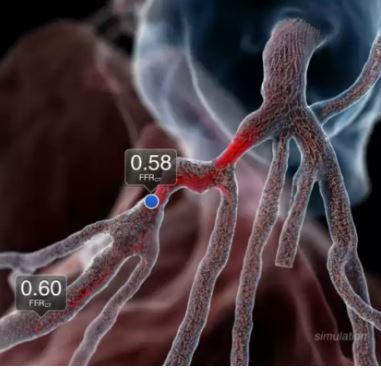
Diagnostic and Interventional Cardiology
https://www.dicardiology.com/article/study-demonstrates-accuracy-noninvasive-ct-ffr-evaluating-cad-patients
CT Perfusion
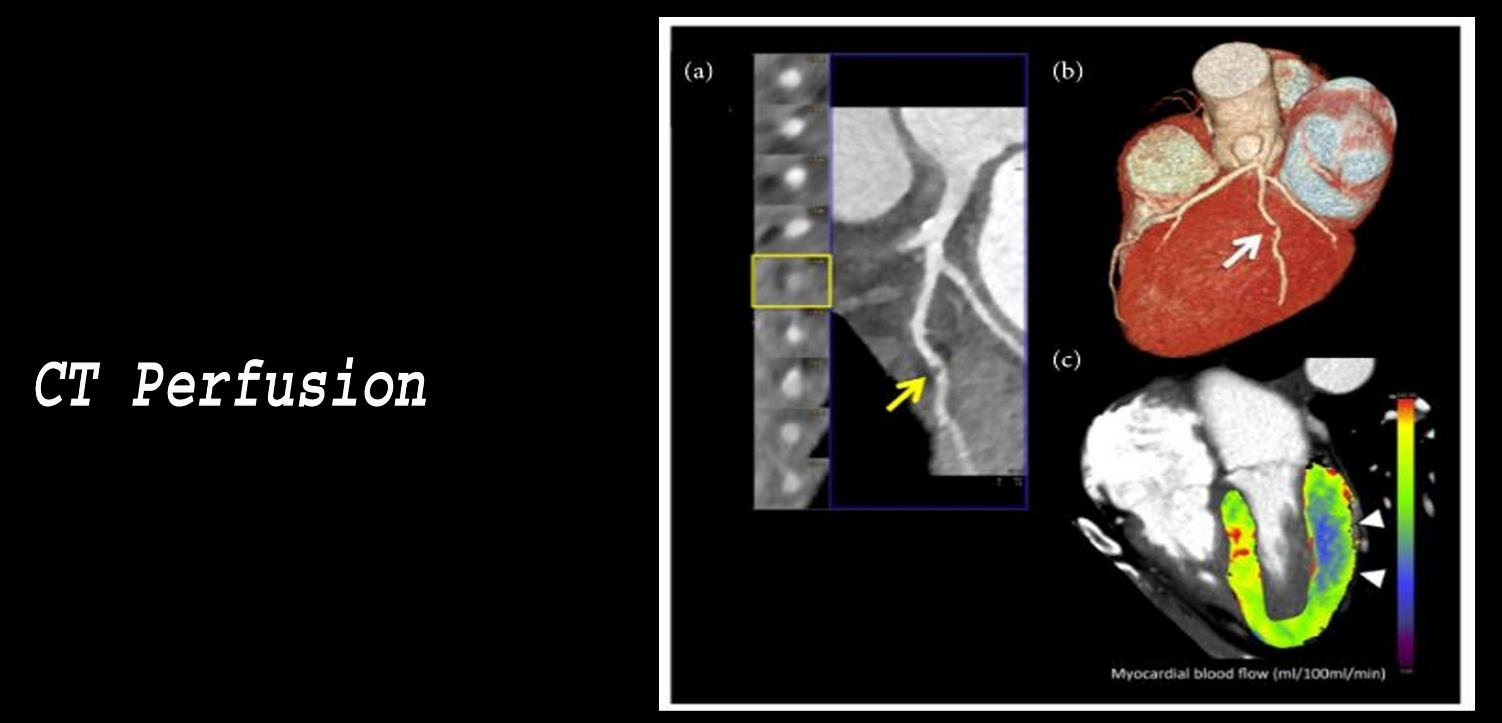
- CT Perfusion
- Core 320 Study Summary
- core 320 study Pub Med Link Full Text
- PERFECTION Study
- PERFECTION Study CTp vs FFR CT (Pub Med)
- Core 320 Study Summary
Plaque Characterization
-
Atherosclerosis
CT-015-lo-res-scaled.jpg
Atherosclerosis starts as a fatty infiltration in the intimal and subintimal layer progressing in size stimulating the formation of fibrous tissue to create the so called fibrofatty plaque. Dystrophic calcification results
Ashley Davidoff MD
thecommonvein.netCT-016-lo-res-scaled.jpg
As the plaque grows , either as a fibrofatty plaque or a calcified plaque or a mixture and it slowly encroaches on the lumen causing progresive narrowing of the vessel and results in time wit decreased perfusion
Ashley Davidoff MD
thecommonvein.netThe Fatty Plaque with thin cap and neovascularity is a land mine waiting to explode
The Vulnerable Plaque
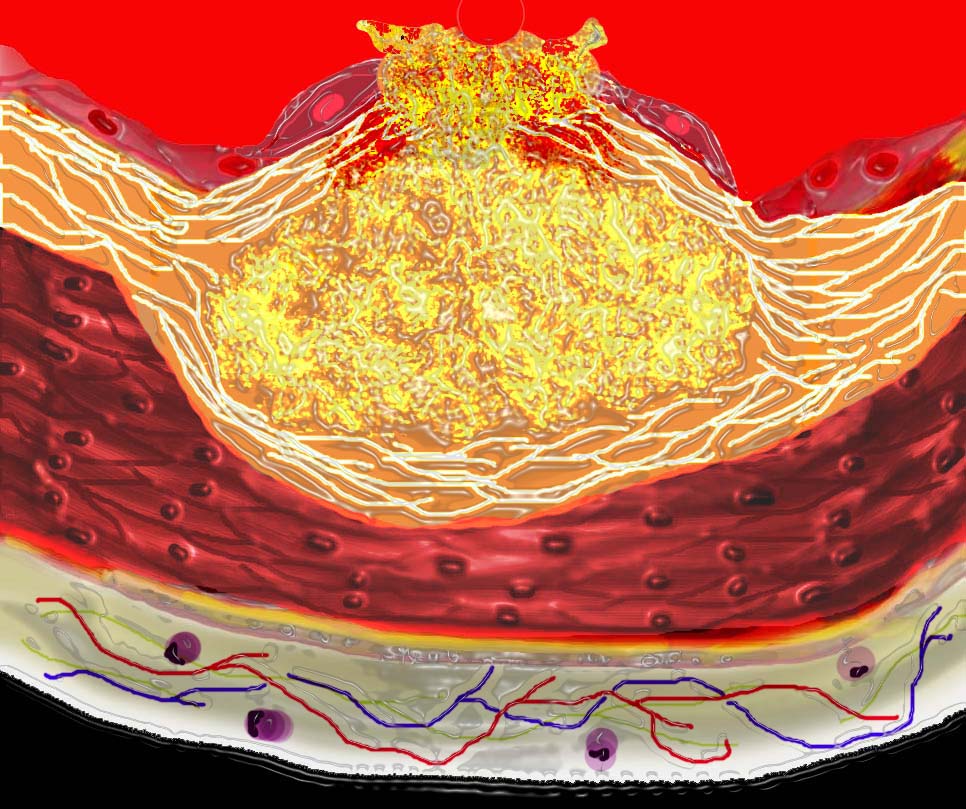
Plaque Rupture
This diagram shows denudation of the endothelial layer with exposure and rupture of the contents of the atherosclerotic plaque in volcanic fashion into the lumen. This event is catastrophic and can result in acute thrombosis and may even be a fatal event. 33801d Courtesy Ashley Davidoff MD. code heart artery atherosclerosis atheroma vulnerable plaque drawing Davidoff art
Ashley Davidoff
thecommonvein.net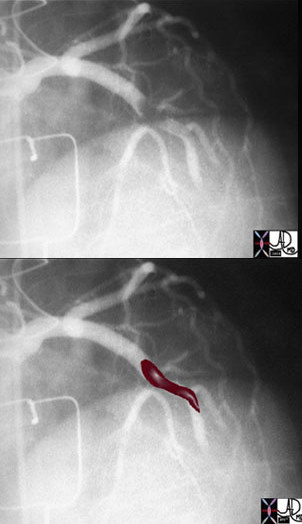
Thrombus in LAD
The above image of this cardiac catheterization shows a coned down left anterior oblique (LAO) projection of the LAD in a patient with acute thrombosis of the left anterior descending artery. In the lower image, the thrombus in the artery is overlaid in maroon.Parthenogenesis and Features of the Vulnerable Plaque
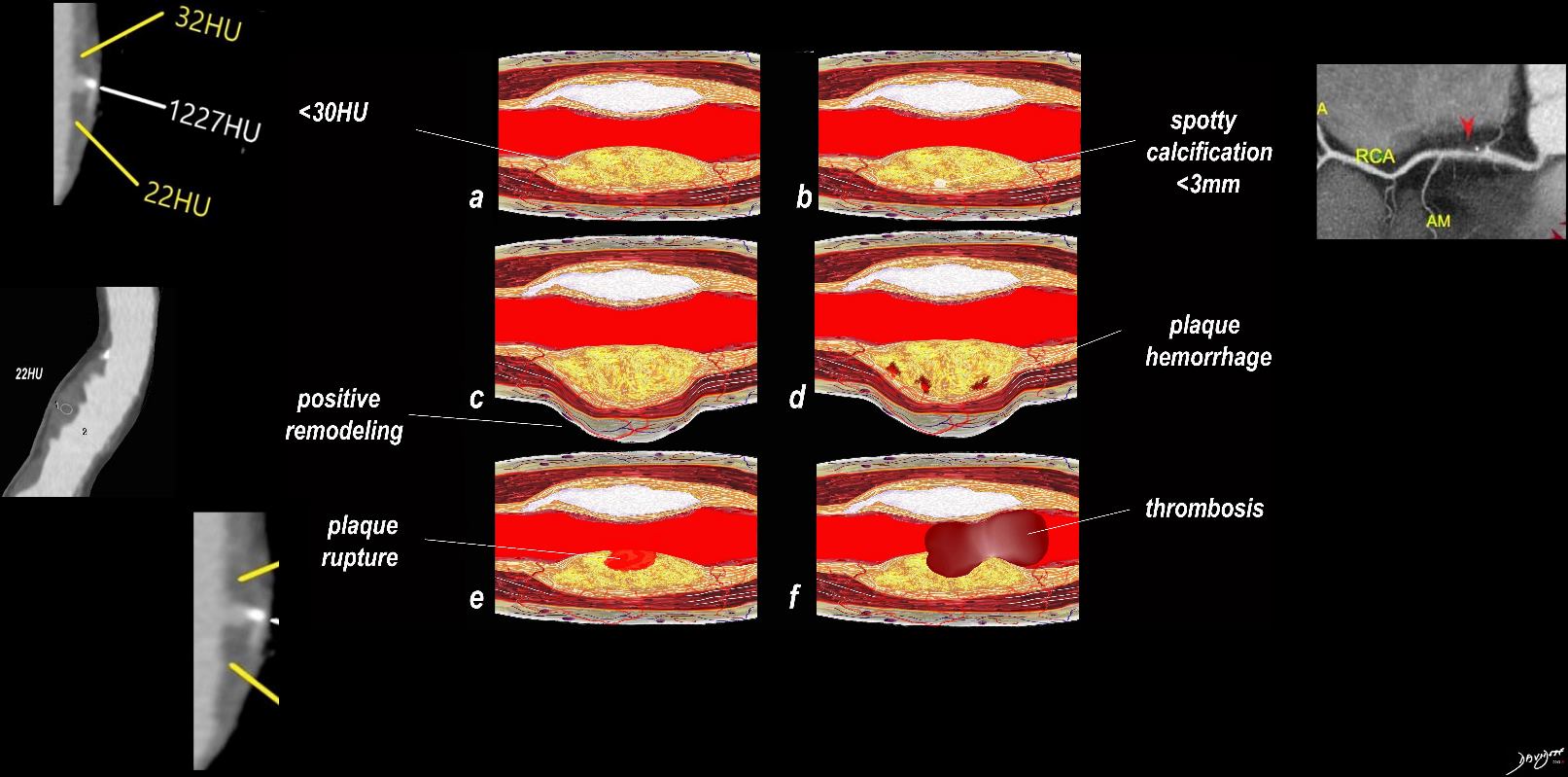
Vulnerable Plaque and Complications
This image consists of (a) a longitudinal section through the coronary artery showing calcified plaque (white) and a fibrofatty plaque (yellow) with about a 50% stenosis. Vulnerability is considered with features of a thin fibrous cap, and a density of less than 30HU. The associated CT shows a low density plaque measuring between 22 and 32HU. Image b shows a focal spotty calcification within the fibrofatty plaque and an associated CT confirm a punctate calcification within the plaque which is another sign of the vulnerable plaque. Image c shows positive remodeling of the wall defines as an outer vessel diameter that is 10% larger than the diameter of the vessel just proximal and distal to the disease. Image d shows intraplaque hemorrhage due to the neovascularity of the vasa vasorum, image e shows plaque ulceration and image e shows thrombosis.
Ashley Davidoff thecommonvein.netIVUS Virtual Histology
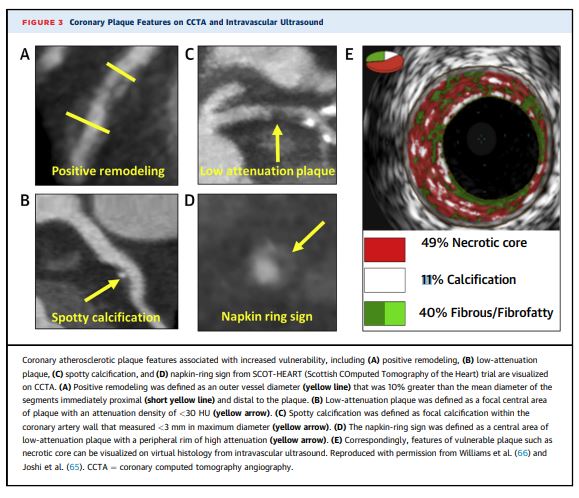
Abdelrahman et JACC 2020 -
CT and Vulnerable Plaque –
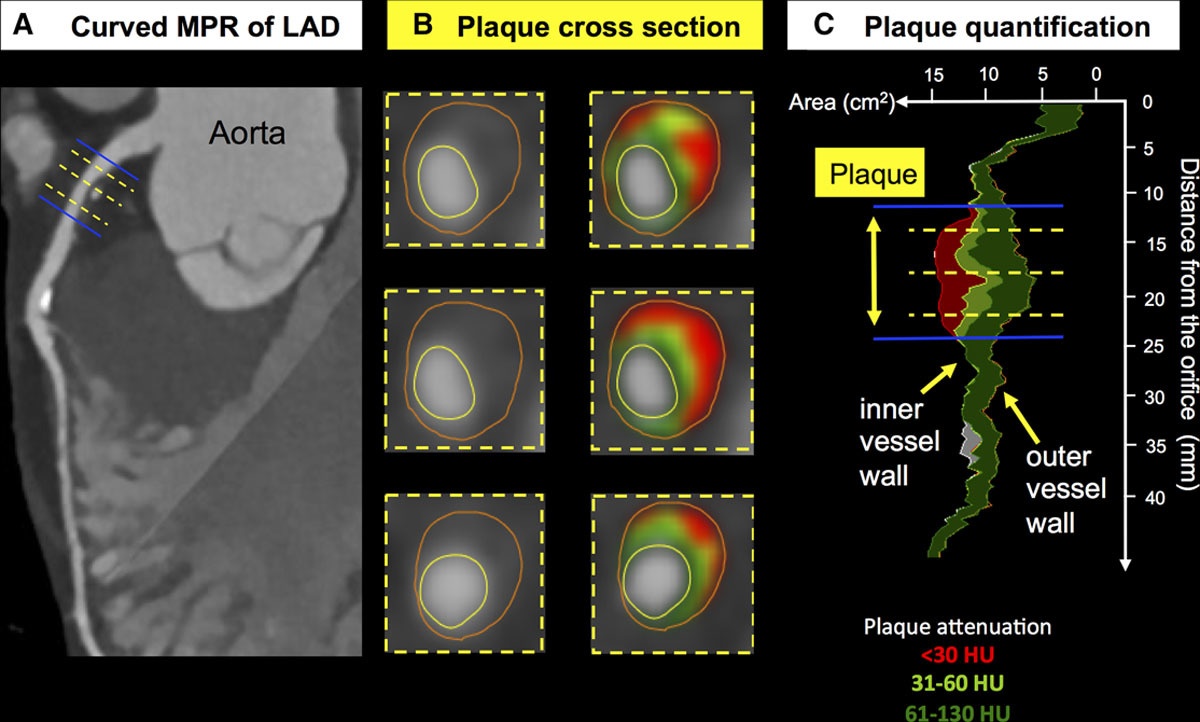 Specific Definitions of High-Risk Plaque Features Improve Detection of Acute Coronary Syndrome
Specific Definitions of High-Risk Plaque Features Improve Detection of Acute Coronary Syndrome
Results From the ROMICAT II Trial
Circulation Cardiovascular Imaging Vol 11 No.8 Coronary
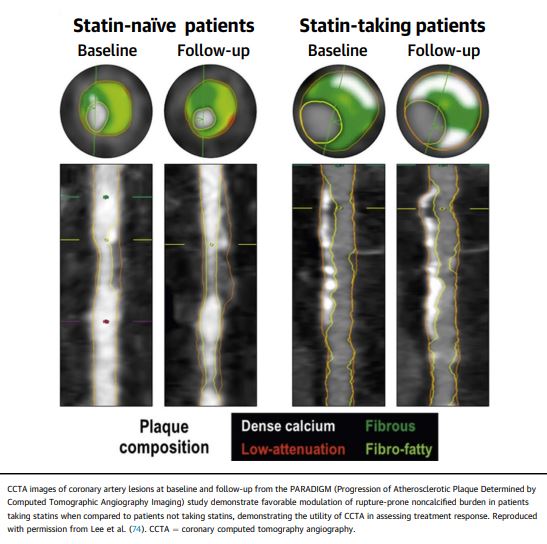
Abdelrahman et JACC 2020Patient with Psoriasis, Atherosclerotic Disease Before and After Biologic Therapy
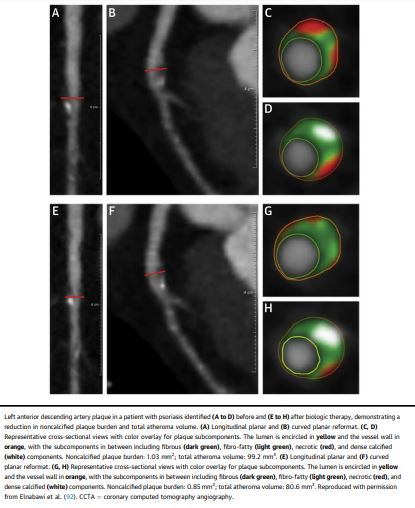
Abdelrahman et JACC 2020Conclusion and Summary
-
I saw it for myself in Washington DC
-
It is definitely on their minds
-
Saw the writing on the walls (floor) of the
-
National Airport
-
Between Concourse B and C
Digital Make Up of the Coronary Artery
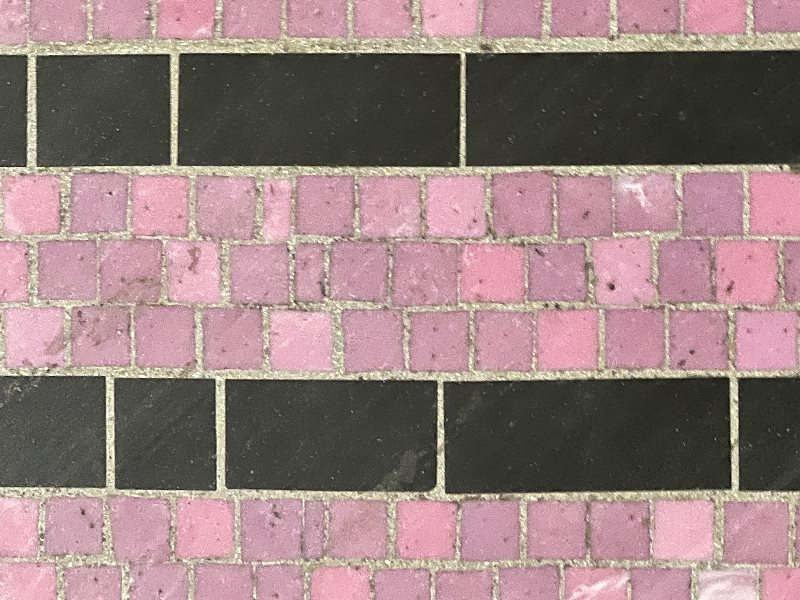
The Arterial Wall
Ashley Davidoff MD
thecommonvein.net
Mosaic on the floor of the Ronald Reagan National Airport in WashingtonConcern for Lipid Infiltration into the Vessels
Concern for the Vulnerable Plaque
Focus to Treat and Help the Vulnerable Before it was too Late
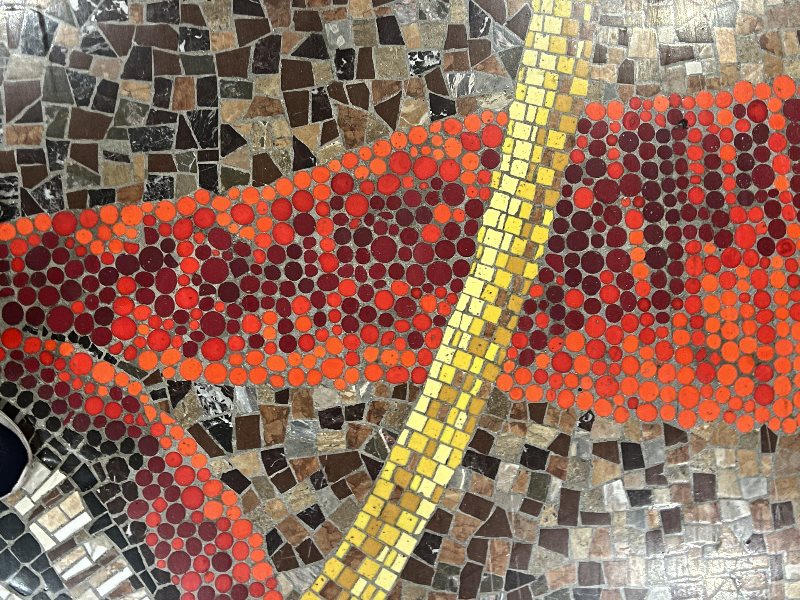
Phospholipid Infiltration Build Up of Unhealthy Elements in the Society and Attention to the Vulnerable
Ashley Davidoff MD
thecommonvein.net
Mosaic on the floor of the Ronald Reagan National Airport in WashingtonAdvancing Computerized Evaluation of Flow Dynamics
Remembering the Role of Shear Stress
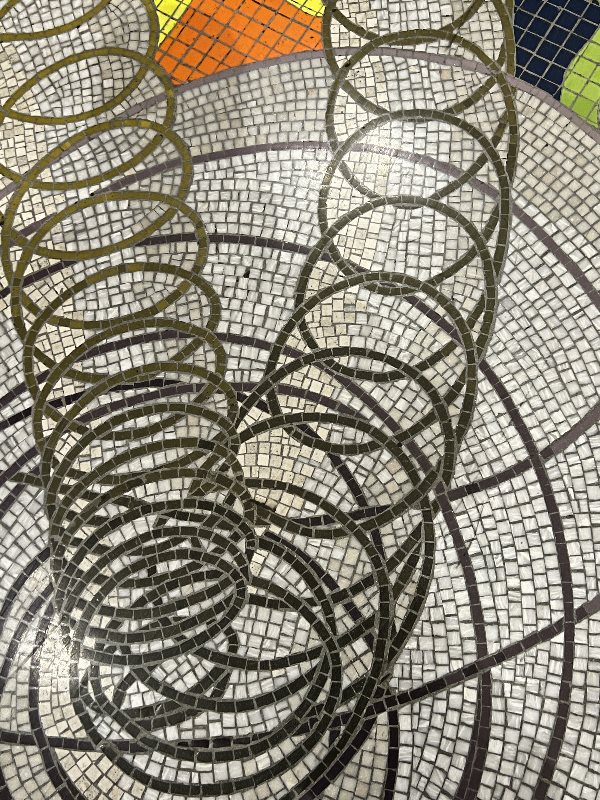
Computational Flow Dynamics and Shear Stress
Ashley Davidoff MD
thecommonvein.net
Mosaic on the floor of the Ronald Reagan National Airport in WashingtonConcern for Shortfalls of Energy Delivery
Attention to Myocardial Perfusion
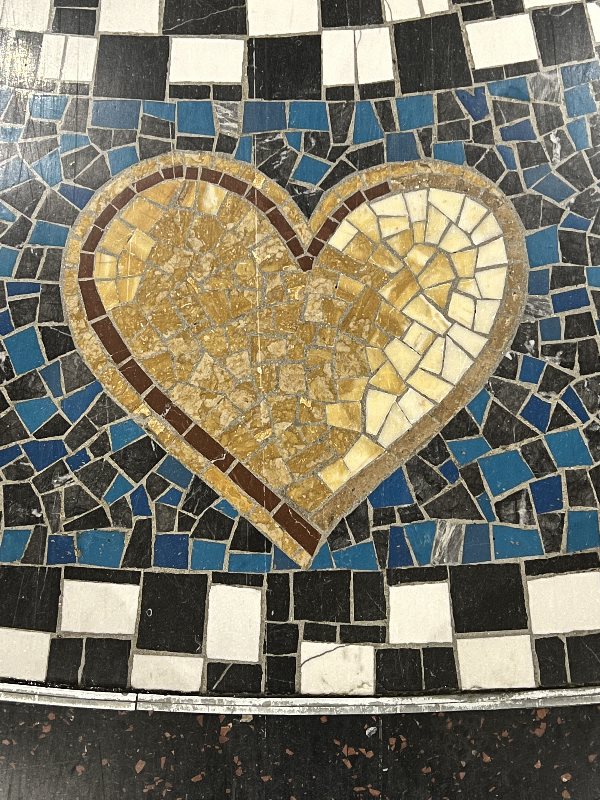
Myocardial Perfusion
Ashley Davidoff MD
thecommonvein.net
Mosaic on the floor of the Ronald Reagan National Airport in WashingtonApproaching a Problem from Many Angles to get to the Truth
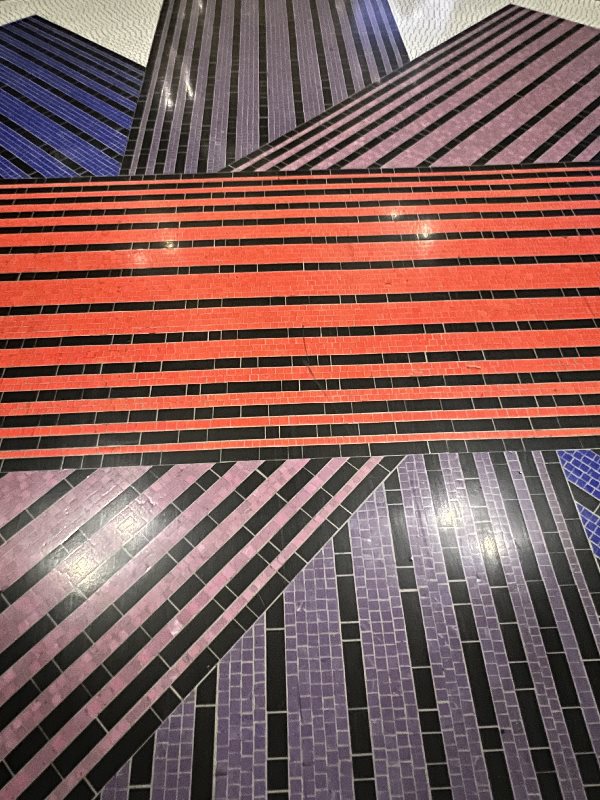
Approach to the Truth
Looking at the Element in Hand from as MAny Angles in Order to Come to the Truth
Ashley Davidoff MD
thecommonvein.net
Mosaic on the floor of the Ronald Reagan National Airport in Washington- What we have learned is that we should approach CAD
- Chronic Illness
- Chest Pain – Stenotic Disease
- like we approach OA
- ie as a mostly a chronic illness
- Chest Pain – Stenotic Disease
- Chronic Illness
- Life threatening Disease –
- Acute potential
- (sneak attack methodologies)
- high suspicion for a hidden enemy
- like pathological fracture
- Identifying the high risk patients
- Look and comment on the coronary arteries in all CT’s
- assessing the risk of a
- future major adverse cardiovascular event (MACE),
- Acute potential
-
-
References and Links
- Abdelraman et al JACC 2020
-

